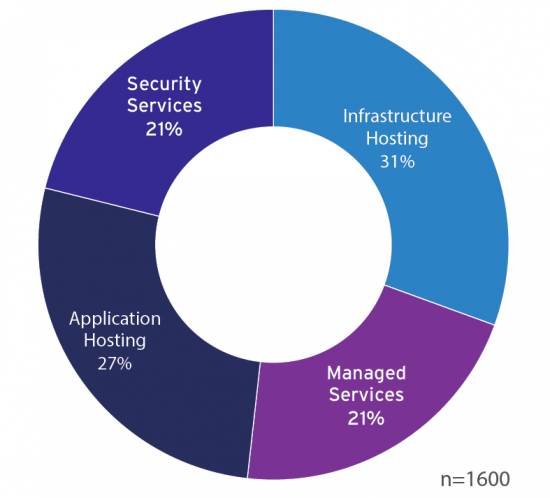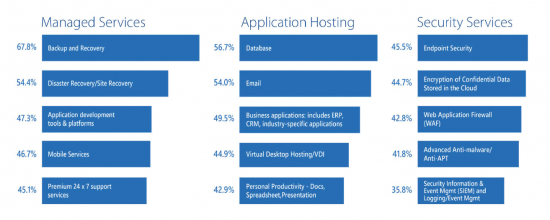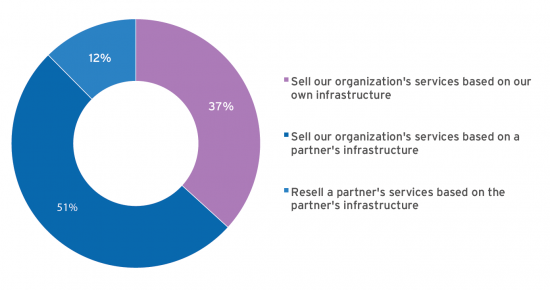































Forget trying to offer cost savings, you need to meet your customers where they are today, not where they were two years ago. And that means helping them solve a wider range of business problems.
Just a few years ago, cloud services were all about dollars and cents. Infrastructure-as-a-Service (IaaS) was the biggest demand from cloud service providers (CSP). Enterprise customers were focused on cutting capital and operational costs. My, how things have changed.
Today, IaaS margins are eroding as cloud infrastructure is commoditized. Enterprises view cost savings as a given for any cloud service. They are now asking their CSP partners tougher questions: How can you help me innovate? How will you help me expand into new markets faster? What can you give me to gain an edge on my competition?
Enterprise expects more from CSP
"Increasingly, users are demanding that their CSPs deliver enterprise-ready, value-added, easily scaled services with security baked deeply within," says Katie Broderick, research director of 451 Research. "They want hosted cloud solutions that are deployed on demand, tuned to specific dynamic workloads, and easily cloud-interconnected in hybrid models. In other words, the hallmarks of cloud are now speed and agility, but most of all services."
Customers are now consuming cloud services in new ways. This gives you the chance to offer unique value and grow your business. Or, you could get pushed out of the cloud services value chain. So how can you make sure your business ends up on the winning side?
The rise of cloud 2.0
According to a 451 Research survey, customer expectations for cloud services have transformed. So much so that the firm dubbed these services: 'Cloud 2.0'.
The first wave of cloud services offered a low-cost alternative to on-site infrastructure. But for the most part, these were one-size-fits-all solutions dominated by IaaS hosting. Today, nearly 70 per cent of the cloud business opportunity lies elsewhere [see Figure 1].
Figure 1. Cloud Services Opportunity, via 451 Research Hosting and Cloud Study, 2015

Customers are now in the driver's seat. You must go beyond cost savings and help them solve a wide range of business problems to compete for their business. [see Figure 2]. You could provide enterprise-grade security services. You might offer managed backup and disaster recovery. You may help them with regulatory and data sovereignty compliance. Or you could manage their entire private or hybrid cloud.
Figure 2. IT Interest in Value-Added Services, via 451 Research Hosting and Cloud Study, 2015

The bottom line? Cloud 2.0 customers want value-added services. They demand the ability to implement what they need, order it through a self-service portal, and deploy it in minutes, not weeks. They want you to reduce their time to market, lower their risk, and help them be more agile and innovative.
Where can you add the most value?
There are ample opportunities for CSPs to stand out in the marketplace. But you need the infrastructure and vision to deliver cloud services in the ways your customers want to consume them. And there's no single answer for every customer. Here are some options:
It's a lot to consider. And you must be prepared to support different consumption models not just for individual customers but, potentially, individual workloads. This is a big ask. The most successful cloud solutions will be delivered through partnerships, where you provide customers with best-in-class cloud resources and applications in easy-to-consume packages [see Figure 3].
Figure 3. Projected CSP Revenue Breakdown, via 451 Research

The key is to build your business model around 'strategic flexibility'. By working with more partners you can meet a greater range of unique customer demands. And you'll have more options to grow where the opportunity takes you.
Cloud 2.0 in action
It may sound hard to adapt your business models and infrastructure to the new Cloud 2.0 but it's not. Many CSPs have done it already.
Ready to get started?
Cloud 2.0 can be a huge boon for your business. To capitalize, you'll need a technology base that can accommodate new services and consumption models. That implies an underlying services infrastructure that can work seamlessly across diverse hardware, applications, and clouds. It has to be designed for automation, so you can use simple, repeatable processes as you develop and deliver new services. And it should use software-defined networking (SDN) to simplify provisioning, accelerate rollouts, and reduce total cost of ownership (TCO).
A Cloud 2.0-ready infrastructure is just the beginning. You'll face questions about whether to build, buy, or partner as you bring new services to market. But with sound planning and a versatile cloud foundation, you'll have the flexibility to answer them on a service-by-service basis, with agility, transparency, and speed.
Find out more
To see how Cisco can help you grow your business with carrier-class cloud services, visit http://www.cisco.com/go/spcloud.
For more examples of CSPs delivering pre-integrated Cloud 2.0 services right now, visit http://www.cisco.com/go/ccamcp.
 Tags quentes :
Nuvem
Service Provider
SaaS
ITaaS
451 Research
CSP
cloud 2.0
Tags quentes :
Nuvem
Service Provider
SaaS
ITaaS
451 Research
CSP
cloud 2.0